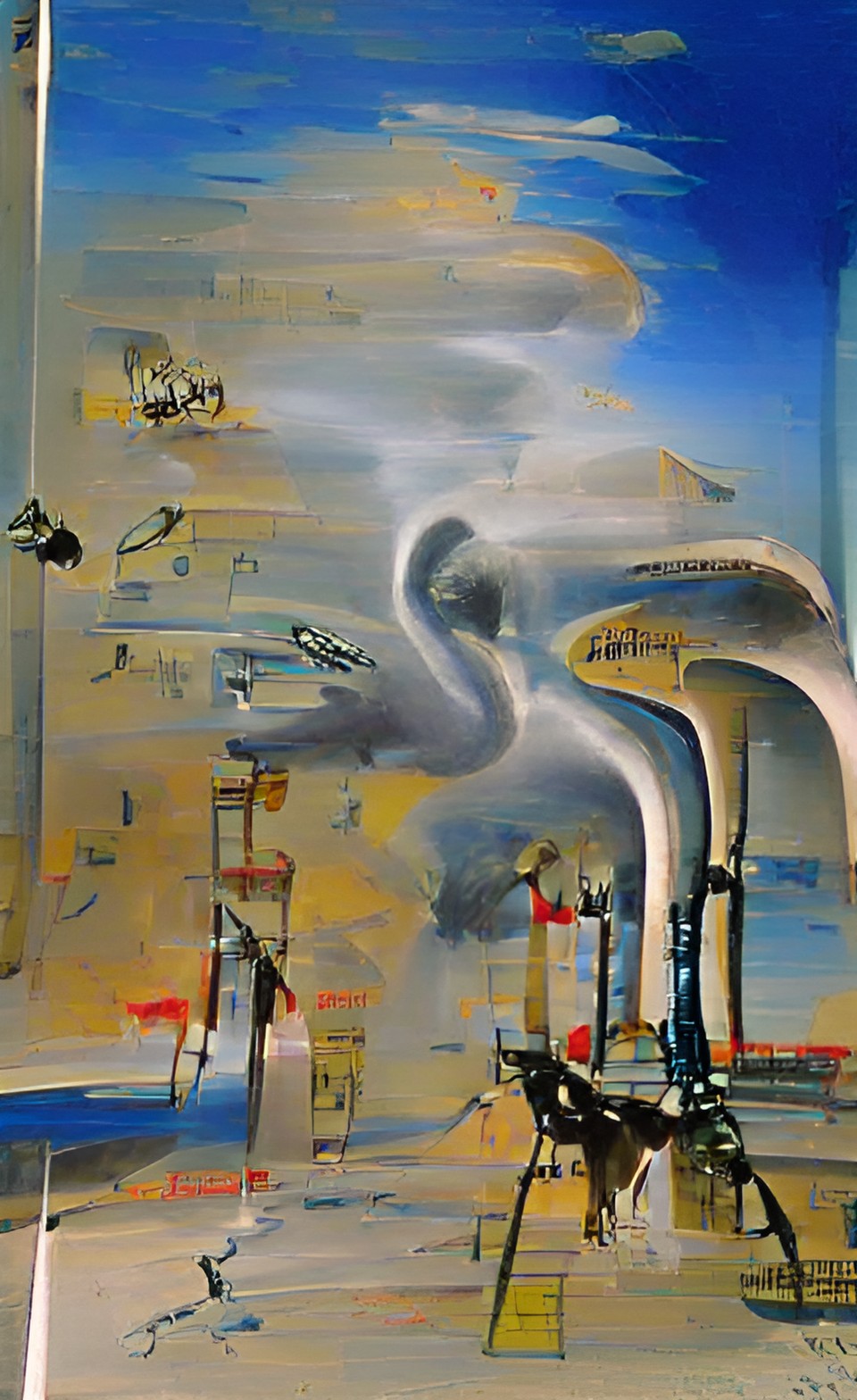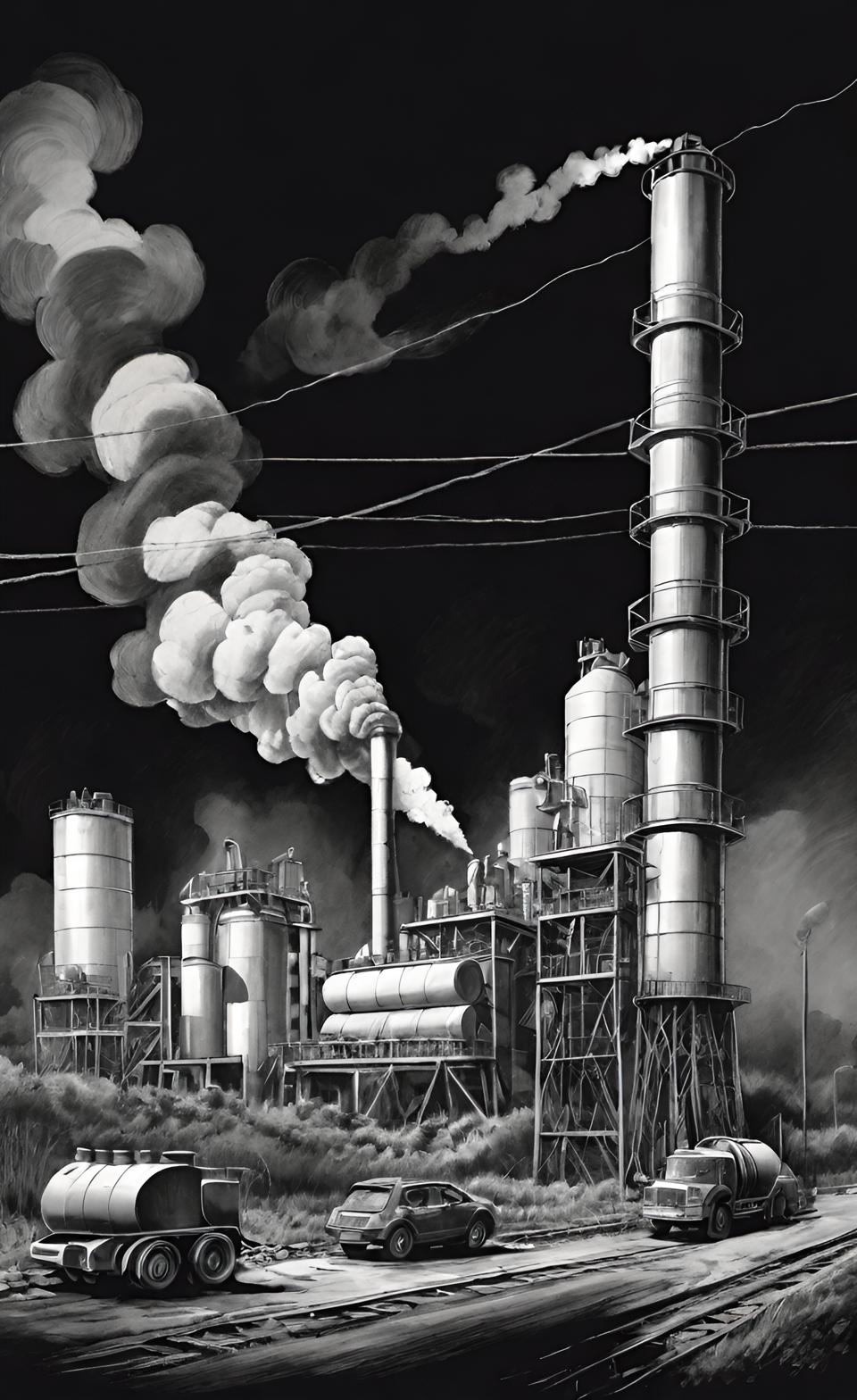- Air Homepage
- Alberta Air Quality
- Prevention of Air Pollution
- Air Pollution Control Equipment
An Insider's Guide to Air Pollution Control Equipment
Here are some basic and advanced features of air pollution control equipment, where industrial emissions are mitigated and environmental well-being is protected. Find out about how to use these technologies more effectively, determining their pivotal role in capturing pollutants and complying with environmental regulations.
Pollution control devices are used by many industries in Alberta. Types include:
- High-speed rotating airflow removes large particulates from industrial emissions with cyclone separators.
- Fabric filters capture fine particulates by filtering air through fabric bags in a baghouse.
- Electrical charges remove particles from the air with Electrostatic Precipitators, ESPs.
- Venturi scrubbers remove pollutants from gas streams using a liquid.
- High-Efficiency Particulate Air - HEPA Filters trap tiny particles.
- Pollutants are removed from gas streams using wet scrubbers.
In the oil and gas sector:
- Flares burn excess hydrocarbons and H2S to reduce volatile organic compounds and odours.
- A VRU is a system that captures and recovers vapors from storage tanks and other equipment.
- Catalytic oxidizers reduce volatile organic compounds (VOCs) and hazardous air pollutants.
- To make pollutants less harmful, thermal oxidizers burn them at high temperatures.
- Glycol dehydrators remove water from natural gas.
- Activated carbon adsorbers make VOCs and other pollutants stick to something making it easy to remove them.
Discover next the importance of careful documentation, backup control systems, dealing with reporting requirements. Also, the classifications and operational parameters of pollution control, from increasing the heights of exhaust stacks to making the flow of effluent streams more direct. Embrace pollution management solutions that lead the way for a cleaner, more sustainable future.
10.0 Technology and Equipment for Pollution Control (Steps 10a - c)
Who's going to like this?
 Operations and emissions
Operations and emissions- For professionals in the industrial operations, environmental compliance, or pollution control sectors, this document is invaluable for understanding pollution control equipment, staying up to date on industry standards, and staying compliant with regulations.
- People passionate about the environment would be interested in learning about advanced pollution control technologies and their role in reducing industrial emissions.
- This text would help government agencies and regulatory bodies monitor and enforce environmental regulations by giving them insight into reporting requirements, classifications, and operational parameters of pollution control equipment. It would help them do their job better.
- Those studying air pollution, environmental engineering, or related fields will find this text useful for learning about the latest advances and best practices in pollution control technology, which will serve as a basis for further research.
- It's a great resource for students pursuing environmental science, engineering, or related disciplines to learn about air pollution control equipment, its classification, operation, and reporting requirements, enhancing their understanding of environmental management.
On with the show...
10.1 - Identification of pollution control technologies and equipment (Step 10a)
A part of the Annual Emissions Inventory Report (AEIR) preparation is identifying pollution control technologies and equipment. Before they get into the air, these technologies and equipment capture, reduce, limit, or destroy air pollutants.
Pollution controls can be installed both at the point of release (like exhaust stacks) and/or earlier in the process. Effluent streams sometimes go through multiple pollution check points before they're released. Modifying processes and adding pollution controls are part of this improvement strategy.
 Pollution everywhere
Pollution everywhereIn the AEIR Program, you've got to report not only the main pollution controls, but also backups or alternative controls. Section 3.2 of the AEIR Standard explains what to include.
The AEIR Form has fields for reporting pollution control technologies and equipment in worksheets 2.2 (for release points) and 3.3 (for non-point sources). Reporting for release points is covered in Section 10.2, while reporting for non-point sources is covered in Section 10.3.
Even if a pollution control is permanently decommissioned, it should still be listed in the AEIR. Set its status to "decommissioned" with zero operating hours. AEIR forms shouldn't be removed from pollution controls.
Appendix D lists air pollution control equipment by sector, which can help you identify them. Some industrial operations have unique controls that aren't listed.
Last but not least, pollution controls, in the context of the AEIR Program, are equipment, technologies, and efforts that industrial operations take to reduce air pollution.
Section 9 of the AEIR Standard discusses non-pollution control units, processes, and equipment. Pollution controls are reported on worksheet 2.2 instead of 2.1 for certain equipment and processes.
10.2 - Gather and enter information about air pollution control equipment and technologies.
The AEIR requires specific details about pollution control technologies. Classification, operation, installation, decommissioning, and operational parameters are included. Using this information, we can track how pollutants are managed before they are released into the atmosphere.
 Regulations for the air
Regulations for the airOccasionally, essential identification information can only be retrieved by directly examining the equipment or its identification plate. While this does not mean shutting down operations, a reasonable effort is sufficient. In the Quantification Methodology Document, you can note if this information is still unavailable in the "Missing Required Information" section.
Fill in the required fields based on the available information for future pollution controls approved under the Environmental Protection and Enhancement Act (EPEA). Worksheet 2.2 in the AEIR Form is where you will input pollution control technology and equipment information. Here are the fields you'll encounter:
1 - Are there any release points controlled? (Y/N) - Indicate whether air pollution control equipment is used to control release points, units, processes, or equipment at the industrial operation.
2 - 'Release Point Descriptive Name': This field is pre-filled with information from worksheet 2.0, so there is no need to enter anything.
3 - Controlled or uncontrolled: Indicate whether the release point is controlled or uncontrolled. For uncontrolled release points, no further information is required.
4 - Input the number of pollution control technologies or equipment associated with the release point. Worksheet 2.2 will require you to fill in the following columns based on this number.
For each pollution control technology or equipment, this section is repeated. Please provide the following information:
1 - Describe the control devices.
2 - An EPEA approval or renewal application specifies a unique designation for air pollution control equipment or technology. The equipment is usually identified by letters and numbers.
3 - Identify the type of control technology or equipment from the dropdown list, or select "Other Control Technology or Equipment" if none of the types are appropriate.
4 - "Other Type" (if applicable): If you choose "Other Control Technology or Equipment," describe what it is and why it doesn't fit into the standard categories.
5 - Identify the unit, process, or equipment being controlled by this control technology or equipment (if applicable). In worksheet 2.1, it should match what was entered.
Tracking and managing pollution control efforts at industrial operations and ensuring compliance with environmental regulations require this information.
Next, we break down the information you provided about pollution control technology or equipment as follows:
The Source Classification Code (SCC) identifies the most appropriate code for the control technology or equipment. It facilitates the categorization and classification of equipment. Section 6.2 of the AEIR Standard provides guidance on selecting an SCC. It must not be left blank.
Enter the manufacturer or make of the pollution control technology or equipment here. Usually, this information can be found on the equipment itself if it isn't documented elsewhere. You can label it as "Custom" if it is custom-built.
Then you specify the model number of the pollution control technology or equipment, if applicable. Like the make, this information may be found on the equipment or in the documentation. "Custom" can be used for custom-built equipment.
Enter the year when the control technology or equipment was actually manufactured, not when it was installed. For older equipment, you can provide a reasonable estimate based on factors that indicate its age if you don't know the exact year.
The year in which the control technology or equipment was installed at the industrial operation is required for the next field. This field can be left blank if it hasn't been installed yet. If you don't know the exact year of manufacture for older equipment, try to estimate it reasonably.
When did the pollution control technology or equipment start operating at the industrial operation? It is usually close to the installation year, but if it hasn't started yet, you can leave it blank. Again, a reasonable estimate is acceptable for older equipment.
In this dropdown menu that follows, you can indicate the general operating status of the control technology or equipment for the inventory year. The options include "Operating," "Temporarily shut-down," "Decommissioned," and "Not yet constructed/operating."
- It was "operating" for all or part of the inventory year.
- "Temporarily shut-down" indicates that it operated previously but was temporarily shut down during the inventory year.
- A decommissioned piece of equipment has been permanently shut down after operating in previous years.
- Equipment approved but not yet built or operational is referred to as "not yet constructed/operating".
From the dropdown menu, select how the control technology or equipment operated during the inventory year. This field helps account for variations in operation by offering options such as "Normal," "Start-up," "Turnaround," "Upset," "Low Annual Output," and "High Annual Variability."
 I'm a pollution control expert
I'm a pollution control expertEnter the approximate number of hours that the control technology or equipment operated during the inventory year. Please note that this will likely be an approximation, not an exact calculation.
When the equipment was permanently shut down or decommissioned, provide the date. This date does not need to be entered if the equipment is temporarily shut down.
Indicate whether this is an approved future control technology or piece of equipment by selecting "Yes" or "No."
The first year of expected operation (if applicable): If it is a future control technology, specify the expected year of operation.
List all substances that this air pollution control equipment or technology is designed to control. It might reduce NOx emissions, for example.
Control or Capture Effectiveness/Efficiency: Enter the estimated effectiveness or efficiency of the control technology. You would enter 80% if it reduces NOx emissions by 80%.
Describe the source of the estimated effectiveness/efficiency values, such as manufacturer specifications.
The primary, secondary, tertiary, backup/alternative, or other control device should be indicated in the hierarchy. Among the options are "Primary Control," "Secondary Control," etc. Backup/Alternate Control Device: If this is a backup or alternative control, specify which control device it serves as a backup for.
To track and manage pollution control equipment and ensure compliance with environmental regulations, these details are crucial.
10.3 - Information about non-point source pollution control technologies and equipment.
There are specific fields for this purpose on the AEIR Form.
Pollution control details like classification, operation, installation, decommissioning, and operational parameters are required on the AEIR Form. Some identification info can only be found by directly examining equipment, but you don't have to shut down operations.
You can note it in the Missing Required Information section if you can't get identification info. Fill in the required fields for approved future pollution controls. There are specific fields for this, so fill them out.
 Air pollution reduction parameters
Air pollution reduction parametersTo use the AEIR Form fields, indicate whether pollution controls are in place for non-point sources. This is a carryover from a previous section. How controlled or uncontrolled is the non-point source?
Enter the number of pollution controls associated with the non-point source. Name the pollution control by giving it a descriptive name. Or use the formal designation of the control as specified in approvals.
Choose a pollution control type. For "Other Type" (if applicable), describe the control type if none of the listed types apply. When dealing with a controlled unit, process, or equipment, identify what's being controlled.
What about an AMS/SCC? Specify the Area and Mobile Source Code or Source Classification Code. Definitions of pollution control types help classify different industrial control technologies.
Overall, this information is crucial for tracking and managing pollution controls at industrial sites.
Details about pollution control equipment are in this next section:
Manufacturer of pollution control equipment: List the manufacturer or label it "Custom" if it's custom-built.
The model number of the pollution control equipment goes here. Include the manufacturing year, when the pollution control equipment was made and the installation year, when the air pollution control equipment was installed.
Provide the year of start-up, when the pollution control equipment started working. For your inventory year, this field allows you to indicate whether pollution control equipment was in operation, temporarily shut down, decommissioned, or not yet constructed/operating. And it describes whether the pollution control was operating normally or had conditions like start-ups, turnarounds, upsets, low annual outputs, or high annual variability during the inventory year.
The next thing is the number of hours the pollution control equipment operated during the inventory year, where you provide the estimated number of hours the pollution control equipment operated.
If applicable, show the date the pollution control equipment was permanently shut down or decommissioned. The approval status of a future pollution control indicates whether it's approved but not yet built or operational. If it's an approved future control, give the year it's expected to start.
Lists the pollutants controlled or captured by pollution control. Each substance's control effectiveness is an estimate of how much it reduces emissions. The amount may depend on information used to estimate control effectiveness, like manufacturer specs. In this part, you can also specify if the pollution control is primary, backup, alternative, or other and which primary control it serves as a backup for (by naming the primary control).
The details help track and report pollution control equipment's effectiveness at reducing emissions.
Calvin Consulting Group Ltd. can help with air quality reporting.
Helping Alberta industrial facilities submit accurate Annual Emissions Inventory Reports is what we do. We can help you with everything from pollution control technologies to equipment details.
Email us today for seamless compliance and superior air quality management.
Providing accurate reporting, seamless compliance, and superior air quality management solutions is what we do.
Clean air is our Passion...Regulatory Compliance is our Business.
Embrace advanced pollution management solutions while complying with environmental standards.
Discover how these cutting-edge tools trap, slash, and constrain those "air nasties." Know the reporting rules and backup control importance for chimney stacks and flow channels. Embrace top-notch pollution-busting fixes while staying green!
Do you have concerns about air pollution in your area??
Perhaps modelling air pollution will provide the answers to your question.
That is what I do on a full-time basis. Find out if it is necessary for your project.
Have your Say...
on the StuffintheAir facebook page
Other topics listed in these guides:
The Stuff-in-the-Air Site Map
And,
Thank you to my research and writing assistants, ChatGPT and WordTune, as well as Wombo and others for the images.
OpenAI's large-scale language generation model (and others provided by Google and Meta), helped generate this text. As soon as draft language is generated, the author reviews, edits, and revises it to their own liking and is responsible for the content.




New! Comments
Do you like what you see here? Please let us know in the box below.